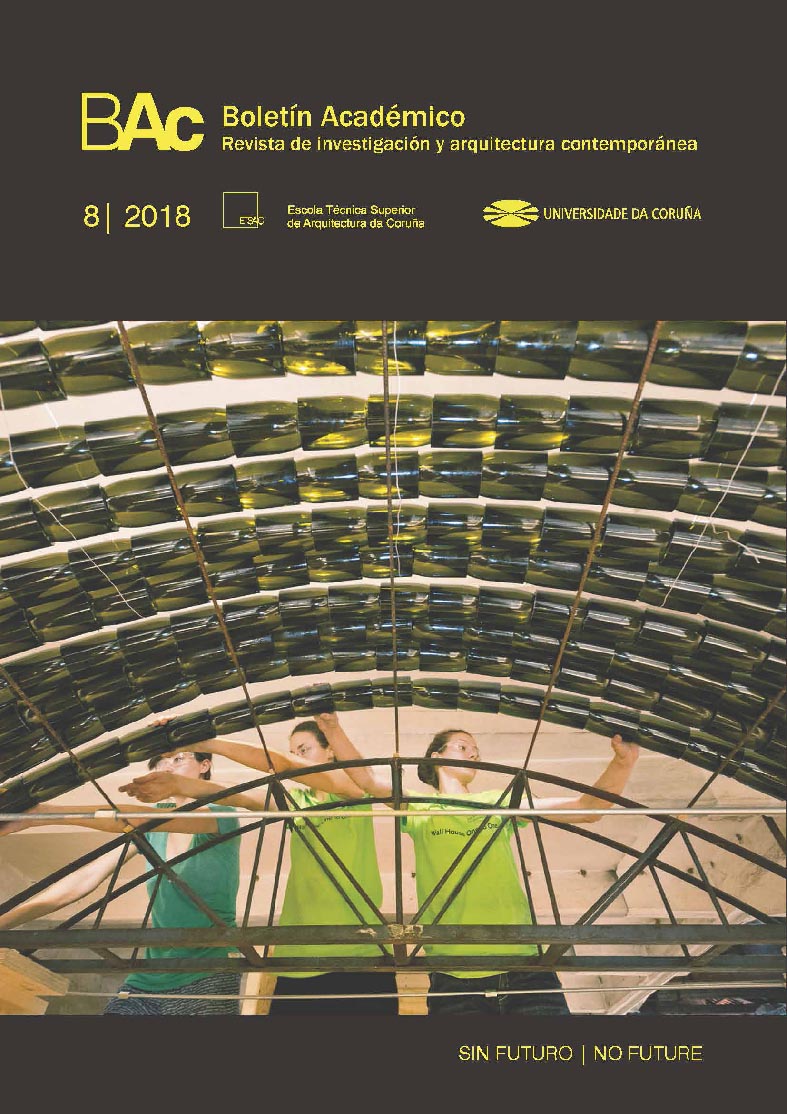The last trip of the baby boomers. Life and Death of Public Space in the cinema in the 1960s and 1970s.
Main Article Content
Abstract
The generation of those born at the end of the Second World War reached their youth carried by the inertia of the technocratic optimism developed by the previous generation. In a context of economic bonanza, the younger generation rebelled against the system, creating a new sensibility that would spawn different countercultural responses. Within these attempts to change society, cities witnessed a recodification of public spaces. Urban space, discredited by the echoes of the ‘death of the street’ promoted by Le Corbusier, was reactivated as a stage for protest and action. However, this revival of public space was rapidly suffocated by the disenchantment of the youth. Once the impossibility to transform the system had been confirmed, a search for new territories started, which cinema interpreted following two strategies: on the one hand, through the production of definitely inhospitable and devastated urban spaces; on the other, by retreating to the individual sphere, which reflected on new modes of habitation. Small communities, communes, and the return to a controlled rural life would be responses which, far from building public realm, would ultimately provide the system with the argument it was looking for in order to destroy and reconfigure the public domain. The films of the late 1960s and early 1970s show the ultimate defeat of a desire which, in the end, was attached to an iconography of destruction, abandonment, and emptiness.
Downloads
Article Details
References
AlSayyad, Nezar. Cinematic Urbanism. A History of the Modern from Reel to Real. London and New York: Routledge, 2007.
Banham, Reyner. Megaestructuras. Futuro urbano del pasado reciente. Barcelona: Gustavo Gili, 1978. (1st Edition. 1976).
Cabezas Garrido, Juan Antonio. “La arquitectura en el cine de ciencia ficción”. PhD diss., Universidad de Sevilla, 2013.
Debord, Guy. La sociedad del espectáculo. Valencia: Pre-Textos, 2002. (1st Edition. 1967).
Domingo, Andreu. Descenso literario a los infiernos demográficos. Barcelona: Anagrama, 2008.
Francescutti, Pablo. Historia del futuro. La Coruña: La voz de Galicia, 2002.
Gorostiza, Jorge. “Londres en ruinas: Desde Soane hasta Hellgate.” La ventana indiscreta, nº4 (October 2006): 9-28.
Harvey, David. La condición de la posmodernidad: Investigación sobre los orígenes del cambio cultural. Buenos Aires: Amorrortu editores, 1998. (1st Edition.1989).
Hobsbawm, Eric. Historia del siglo XX. Barcelona: Crítica, 2000. (1st Edition. 1994).
Jameson, Fredric. El posmodernismo o la lógica cultural del capitalismo avanzado. Barcelona: Paidós, 1991.
Jones, Landon. Great Expectations: America and the baby boom generation. New York: Coward, McCann and Geoghegan, 1982.
Leary, Timothy. LSD Flashbacks. Una autobiografía. Barcelona: Alpha Decay, 2004 (1st Edition. 1983).
McLeod, Mary. “La era de Reagan. Del posmoderno a la deconstrucción.” Arquitectura Viva, nº8 (October 1989): 7-19.
Rivera, David. “Paraísos melancólicos. La utopía de los conjuntos megaestructurales.” Teatro Marittimo. Revista de Cine+Arquitectura, nº1 (Septermber 2011):67-99.
Roszak, Theodore. El nacimiento de una contracultura. Barcelona: Kairós, 1976. (orig. 1968).
Sennett, Richard. El declive del hombre público. Barcelona: Anagrama, 2011. (1st Edition. 1977).
Shiel, Mark. “A Nostalgia for Modernity: New York, Los Angeles and American Cinema in the 1970s.” In Screening the City, edited by Mark Shiel and Tony Fitzmaurice, 160-79. New York, London: Verso, 2003.
Sobchack, Vivian. Screening Space. New Brunswick, New Jersey and London: Ungar Press, 1987.
Sontag, Susan. Contra la interpretación. Madrid: Alfaguara, 1996. (1st Edition. 1966).



